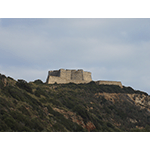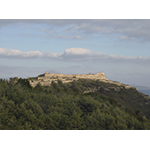Defensive System of Porto Ercole
As of 1557, Porto Ercole, along with Orbetello, Porto Santo Stefano, Talamone, Monte Argentario, and later, Porto Longone, became part of the State of Presidi. Its defensive system is characterised by three principal elements: the Fortress, Forte Filippo and Forte Stella.
Built in the 15th century on a project by Vecchietta, englobing several thirteenth-century buildings, the Fortress was modified in the 16th century under the direction of Anton Maria Lari and Baldassarre Lanci. The walls descend to the sea and, by means of an underground passage, connect the Fortress to the Santa Barbara bastion, built on the port along with Santa Caterina fort (today private property), to strengthen the defensive system.
Forte Filippo (also private property) was built in 1558 on a project by Giovanni Camerini. An elongated quadrangle in shape, it has massive bastions at the corners and is surrounded by a deep trench. With its only entrance being a drawbridge on the eastern side, its batteries of cannons, and precise, eye-level shots of the Santa Caterina Battery, made it an important defensive stronghold.
Forte Stella, which was built in the second half of the 17th century and became a museum in 1999, has quite an original shape: the central nucleus, surrounded by quadrilateral walls with bastions at the corners, has a six-pointed star plan (from which it takes its name). It too, was surrounded by a trench and had a single point of entry.
****************************
Texts by Graziano Magrini
English translation by Victor Beard
Last update 17/gen/2008





